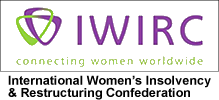Explaining the Differences Between Chapter 7 and Chapter 13

There are many factors to consider when you seek bankruptcy protection, and there are different options, depending on your circumstances. It is important to understand these options and how they can affect you. In order to make an informed decision, here is a comparison of Chapter 7 and Chapter 13 bankruptcy options.
Chapter 7 Bankruptcy
Chapter 7 bankruptcy, also known as total liquidation bankruptcy, means that your unsecured debt is “forgiven;” creditors may no longer pursue you for repayment. This allows debtors a fresh start and will hopefully set them on a course for success. There are certain debts that cannot be discharged under Georgia bankruptcy laws, such as alimony and child support payments, some taxes, and student loan debt. Unsecured debt includes credit card debt and other unsecured loans. You may be able to keep your car or house by “reaffirming” those debts, but once you do, you will not be able to bankrupt that debt for eight years. You must also bring the loan current, so if you are behind in payments, this may be difficult. You have the ability to decide which loans you want to reaffirm if you are current on the loan payments.
Chapter 13 Bankruptcy
Chapter 13 bankruptcy allows you to retain your debt and issues a repayment plan. This plan can include all or a portion of the debt. This can prevent a foreclosure, allow you to catch up on car payments and can stop interest on tax debt. If you are able to abide by the repayment plan, your remaining debt will be released at the end of the repayment plan. According to Georgia law, you must have a regular source of income that can be applied to the repayment plan.
Deciding whether or not bankruptcy is a viable option is difficult, but with the proper guidance, it can make the decision easier. Gingold & Gingold can walk you through the process and help you decide which option is right for you. Contact us today, or call (404) 685-8800 to schedule your free consultation.







